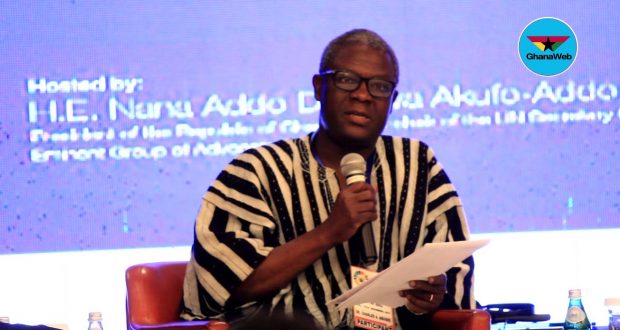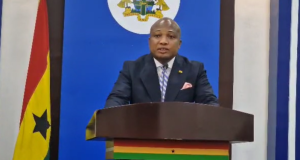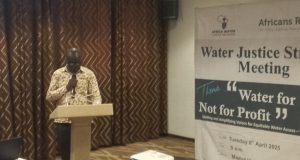In his visit to flood-hit areas recently, the Vice-President, Dr Mahamudu Bawumia, announced that Cabinet will meet to discuss the construction of the Pwalugu Multipurpose Dam{PMD} on October 1.
This is good news and the timing is epic; it were as if Dr Bawumia listened in on the high-level meeting held in Bolgatanga a few days before.
At the meeting, opinions leaders in the Northern, Upper East and West regions, staff of the NDPC, civil society and religious organisations, among others met to consider the implications of the Ghana Beyond Aid (GBA) vision to the development of the area.
Participants were unanimous that for the area’s economy to be transformed, the construction of the PMD was an essential first step.
This dam also holds the key to the realisation of the government’s flagship project objectives, including the modernisation and transformation of agriculture, industrial development and irrigated agriculture.
Pwalugu Dam
The proposed PMD lies on the White Volta about 15 kilometers north-east of the Pwalugu bridge.
The bridge divides the Northern Region from the Upper East Region and is approximately 20km to Bolgatanga and an equal distance to Walewale.
It is ‘multipurpose’ because when constructed, the dam will deliver more than one benefit; it will control the periodic floods, generate hydroelectric power, irrigate tens of thousands of hectares and unleash aquaculture.
History
In 1964, the Food and Agricultural Organisation (FAO) and the United Nations Development Programme (UNDP) jointly undertook a ‘Land and Water Resources’ study of the White and
Black Volta rivers and produced a comprehensive master plan, highlighting the Bui-Bamboi and Kayambia dams on the Black Volta and the PMD, Dieguoro, Tono, Tamne, Sissili, Kulpawn and Nasia on the White Volta.
They stated that if fully harnessed, at least 200,000ha of land will be put under irrigation. It also highlighted the potential of a watercourse transport all the way to Ada and proposed a port at Bolgatanga.
In 1967, a Japanese company, Nippon Koei, undertook a study of the PMD. In 1984, Acres International Ltd, Niagara Falls (Canada) undertook further work on the dam followed in 1992 by the French company, Coyne et Bellier, which also studied the Daboya and Kulpawn dams.
These reports stayed on the drawing board until 2014 when the Volta River Authority (VRA), funded by the French development agency, Agence Francaise de Development (AFD), commissioned Tractabel Engineering Ltd (TE) to undertake a full feasibility study, including an Environmental and Social Impact Assessment (ESIA). It was concluded in January 2016.
The study, which was biased towards hydropower generation, estimated the cost of the dam to be in the neighbourhood of $800 million. The outputs included:
• 209 GWh/year electricity or 70MW installed capacity.
• 20,000 ha irrigated land
• Flood protection of an area of 24,000 ha downstream
To achieve these results, the reservoir would inundate an area of 39,600ha and will displace up to 4,500 people.
To reduce the inundation and the financial and environmental costs, a steering committee led by the VRA including (GIDA, SADA/NDA, WRC) and development partners (AFD and the World Bank) proposed a review of the feasibility study to prioritise irrigation and flood control over hydropower.
The AFD agreed to finance this review and the World Bank provided guidance on the engineering and the ESIA studies.
The TE Ltd was asked to investigate four alternative scenarios:
Scenario 1: one storage main dam at same Pwalugu site (as in the feasibility report) but lower the dam wall guided by what is needed to irrigate 20,000 ha, which may sacrifice hydropower but reduce inundation.
Scenario 2: Locate the main dam on an upstream axis of the current design identified at prefeasibility stage with a potential to reduce inundations while preserving hydropower.
Scenario 3: Provide for one reservoir for both irrigation and power rather than 2, with the dam aiming to irrigate 20,000ha and to generate hydropower
Scenario: Assess the opportunity for phasing the irrigation development e.g . design the dam designed to irrigate 5,000 ha in the first instance, while accounting for future construction works raising the dam crest to irrigate up to 20,000 Ha.
These reviews were completed in April this year and await government decision on the preferred option, guided by the VRA and the steering committee. The costs, relative to the benefits, have been significantly revised down.
Regarding financing, the African Development Bank (AfDB) has indicated interest to finance the detailed design of the chosen dam. The World Bank, the AFD and even the European Investment Bank have, in the recent past, expressed interest in financing, with the World Bank reportedly willing to convene a donor/financing conference if the government requested.
Losses
The benefits are tremendous, starting with flood control.
Over the past 24 years, flooding has occurred in 10 years and affected the Upper East and West, Northern and Brong Ahafo regions.
In 1999, 52 people lost their lives, millions of dollars lost and about US$21 million spent on rehabilitation.
In 2007, 266,000 people were affected, 11,000 houses destroyed and at least 22 people killed. Some 70,500ha of farmland were destroyed, thousands of animals destroyed, resulting in production losses of at least 144,000 tons of crops.
The government spent nearly $50 million in aid. It was the severity of the 2007 floods that created the political condition for the President Kufuor administration to announce the Northern Development Fund – the precursor of SADA and now NDA.
In 2010, five people were killed in the Northern Region alone, 48,000 people affected, 2,400 houses destroyed and about 8,000ha of agricultural land damaged. In 2018, we are still counting the cost.
Benefits
The full tragedy of the periodic floods is not only the loss of lives and property (including roads and bridges) but the waste of the most important resource of agricultural transformation – water.
The water destroys and is allowed to run free into the sea rather than harnessed for use in the long dry season, when it is most needed.
The PMD is the first major line of defence against widespread flooding. To complete the defence, the Nasia, Daboya and Sissili-Kulpawn dams also must be constructed in time.
The second is irrigated agriculture and agro-processing. If only 13 per cents of the run-off water generated annually from the Volta catchment in Ghana (3 billion cubic meters is harnessed, the country can irrigate over 200,000ha.)
All the irrigation undertaken in the country, including Vea, Tono, Danwenya, Kpong, Yagaba and the small-scale ones put together is less than 30,000ha.
The PMD alone will inject 20,000ha. The irrigated area, mostly in Northern Region – the Mamprusi area – is largely flat, unsettled and suitable for rice, maize, sugarcane, oil seeds, legumes, fresh vegetables and grazing grass, with potential value chains such as poultry, fish feed, fish production organic fertiliser and biofuels sugare.
The dam is also the answer to the revival of the Pwalugu Tomato Factory which has been idle for decades because of insufficient production of tomatoes.
Import substitution
Ghana would save billions of dollars of imports and stimulate thousands of jobs. It will stimulate new settlements too. Places such as Walewale, Bolgatanga and Kpesempke will thrive economically and serve as an attraction for migration from south to north.
Given their proximity to Tamale, the Pwalugu Dam will also be a shot in the arm for the Tamale International Airport as a potential destination of fresh vegetable exports.
This is the transformational potential of the dam. The dam will more than pay for itself in developmental terms.
The dam will also stabilise the flow of water to the Volta Lake to enhance the navigation potential of the lake/river. The construction in the future of Daboya and Nasia will make this even more feasible.
That is why urgent attention should now be given to the construction of the dam.
By: Charles Abugre
The writer is a Development Economist and former CEO, SADA
Email: [email protected]
 Public Agenda NewsPaper Ghana's only Advocacy & Development Newspaper
Public Agenda NewsPaper Ghana's only Advocacy & Development Newspaper






